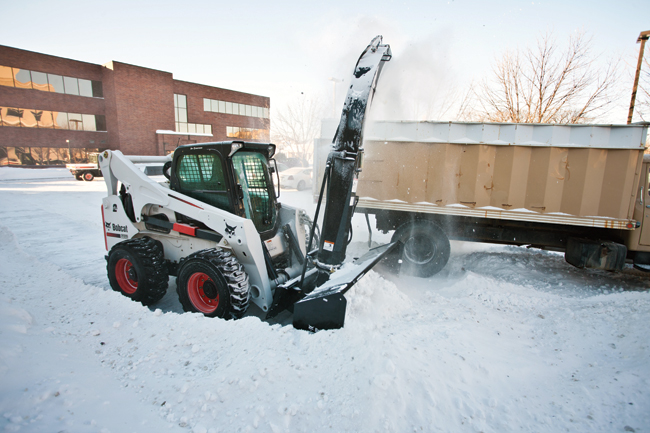Snow Loaders
Though construction slows in colder climates when the temperature dips, for contractors in the snowbelt winter is often when the loaders in their fleets get a different kind of workout. To ensure equipment stays in peak operating condition, contractors should have been thinking about winterizing their compact equipment as soon as the first leaves hit the ground. Of all the compact equipment in their fleet, owners and operators say skid steer loaders are the machines most commonly used in the wintertime. “Cold temperatures can certainly affect machines in different ways,” says Mike Fitzgerald, loader product specialist for Bobcat Co.

Fluids, Oils and Fuels
Some of the most important winter checkup items are a skid steer loader’s fluids, oils and fuels. If a skid steer loader doesn’t have the proper engine oil, engine coolant, hydraulic oil and fuel for operating in colder temperatures, then a contractor will find that his skid steer loader’s performance isn’t up to par. Fitzgerald says owners and operators should refer to their operator’s manual for instructions on filling their machine with the correct fluid in the correct increments. For example, when the temperature turns colder, it’s important to have lighter engine oil that matches the outside operating temperatures.
Operators should not not overlook the hydraulic oil filters on their skid steer loaders. These should be changed as they may have collected water and debris over the spring and summer. Changing the hydraulic oil filter will help minimize future maintenance problems, Fitzgerald says. As with any automobile, engine coolant — or antifreeze — is also an important wintertime fluid for compact equipment that should be tested prior to the weather turning chilly and according to manufacturer’s specifications. Not only can improper oils and coolants cause maintenance problems in the winter, but so can using the wrong fuel. While it’s typically not required to use anything other than normal No. 2 grade diesel fuel, owners in far northern regions may want to look into an alternative diesel fuel because in extreme cold weather conditions, diesel fuel can gel. Fitzgerald says that compact equipment owners will want to match the machine’s fuel with the working conditions.
Tires, Batteries and Other Items
It’s common knowledge that when temperatures drop, so does the air pressure in tires. One of the first physical signs of cold weather will be a skid steer loader’s sagging tires. Low tire pressure can translate into lower lift and push capabilities, especially for those customers who intend to use the loader for clearing snow. Owners should check the owner’s manual for the proper psi and inflate the tires accordingly.
“If the tire had a small leak or a nail stuck in it, and you filled it up once or twice a week in the summer — in the cold weather, you’ll be filling it up once or twice a day,” Fitzgerald says. “It’s better to take care of these problems before the machine is on the jobsite to avoid downtime.”
Downtime is unavoidable if you have a dead battery. There’s nothing worse than having a crew lug a skid steer to a jobsite only to find that it won’t start the next day because of a dead battery. Cold weather plays havoc on batteries because it requires them to generate nearly twice as many cranking amps in order to turn over and deliver oil to the engine. That’s why contractors in colder climates go through batteries faster than those in warmer climates. So it’s imperative that they take the time to have a load test performed on their compact equipment batteries before the first snow hits the ground. They should also check the battery wires and connections for any wear or corrosion because such defects could result in loss of amps.
Christina Schave is a technical writer with Two Rivers Marketing, based in Des Moines, Iowa.




